Now let’s get to the measurement, where I rely on the central lab cooling with the chiller and another expansion tank, as usual. Blue-colored coolant is now used, which is filtered on a regular basis. The water temperature is kept at a constant 20 °C, which greatly simplifies the determination of absolute temperatures and deltas. The internal GPU diode measures the chip temperature reliably from about 19 °C, but it quickly becomes inaccurate below that. Room temperature and water temperature are thus also approximately the same, which avoids dangerous condensate.
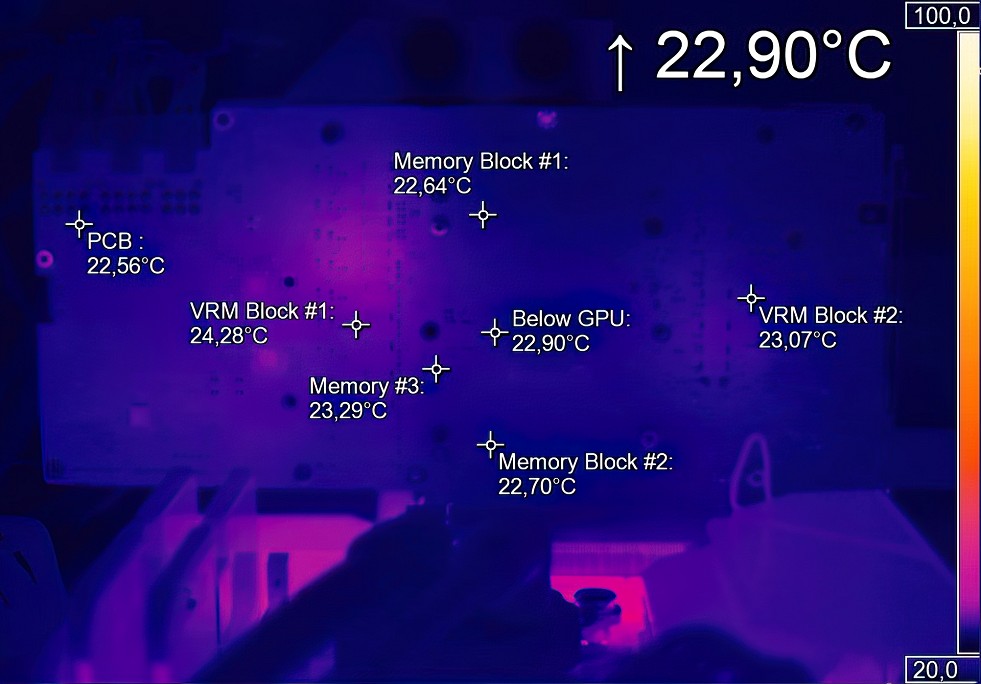
Temperatures are recorded using an engineering tool for, among other things, the GPU diode (or also the hotspot), the substrate temperature of the GDDR6 (hotspot) and the VRM temperatures, as well as using a calibrated, high-resolution industrial camera for precise infrared measurements. The PI640 from Optris with a normal focal length is used here. The camera has a 640 x 480 pixel bolometer to capture thermal radiation. For the evaluation, I record a radiometric video, which I can also read out later at will.
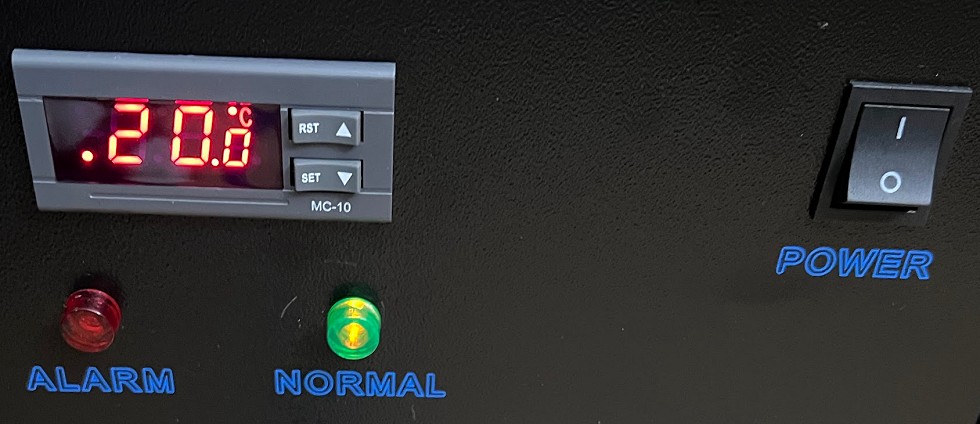
| Test System and Equipment |
|
|---|---|
| Case: |
Open Benchtable |
| Monitor: | Alphacool Ice Age 2000 Chiller, 20l additional reservoir |
| Power Consumption: |
Oscilloscope-based system: Non-contact direct current measurement on PCIe slot (riser card) Non-contact direct current measurement at the external PCIe power supply Direct voltage measurement at the respective connectors and at the power supply unit 2x Rohde & Schwarz HMO 3054, 500 MHz multichannel oscilloscope with memory function 4x Rohde & Schwarz HZO50, current clamp adapter (1 mA to 30 A, 100 KHz, DC) 4x Rohde & Schwarz HZ355, probe (10:1, 500 MHz) 1x Rohde & Schwarz HMC 8012, HiRes digital multimeter with memory function MCU-based shunt measuring (own build, Powenetics software) NVIDIA PCAT and FrameView 1.1 |
| Thermal Imager: |
1x Optris PI640 Pix Connect Software Type K Class 1 thermal sensors (up to 4 channels) |
| OS: | Windows 11 Pro (all updates, current certified drivers) |
Now the cooler has to prove itself! I let the cooler sweat for a quarter of an hour in a slightly regulated cycle with about 250 l/h at 325 watts TGP (about 408 to 410 watts TBP) and Horizon Zero Dawn in Ultra-HD and at maximum settings. The complete board is heated through after approx. 8 to 10 minutes, which can be recorded and evaluated very nicely via the large-area IR measurements.
Let’s now look at the individual values in curve form as a progression from the cold state up to the complete warm-up in the gaming loop, which, by the way, turns out very similar in terms of TBP. For a 400-Watt Plus card, the readout values are really nifty, as the temperatures are very balanced at all points. We are on average 3-5 degrees above the values of the predecessor, which, however, had to cool down over 50 watts less. If I reduce the TBP of the new card to the then 350 watts, then the new cooler is even up to 2 Kelvin better in the result, but reduces the flow significantly less (<20 percentage points to over 35 percentage points then).
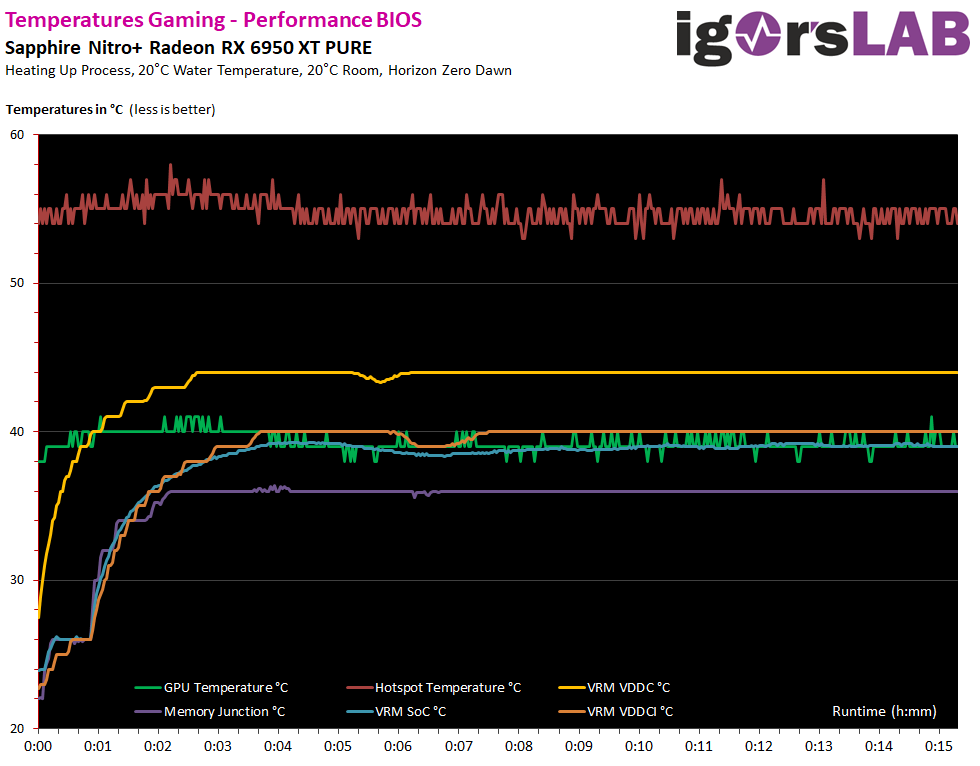
The measurement result for the GPU is first okay in this form. The delta of under 20 degrees for the GPU is completely acceptable for a current AMD CPU in this wattage class. Further gains at this point would certainly create design disadvantages elsewhere. Even the maximum of 44 °C in the hottest VRMs is nothing to worry about.
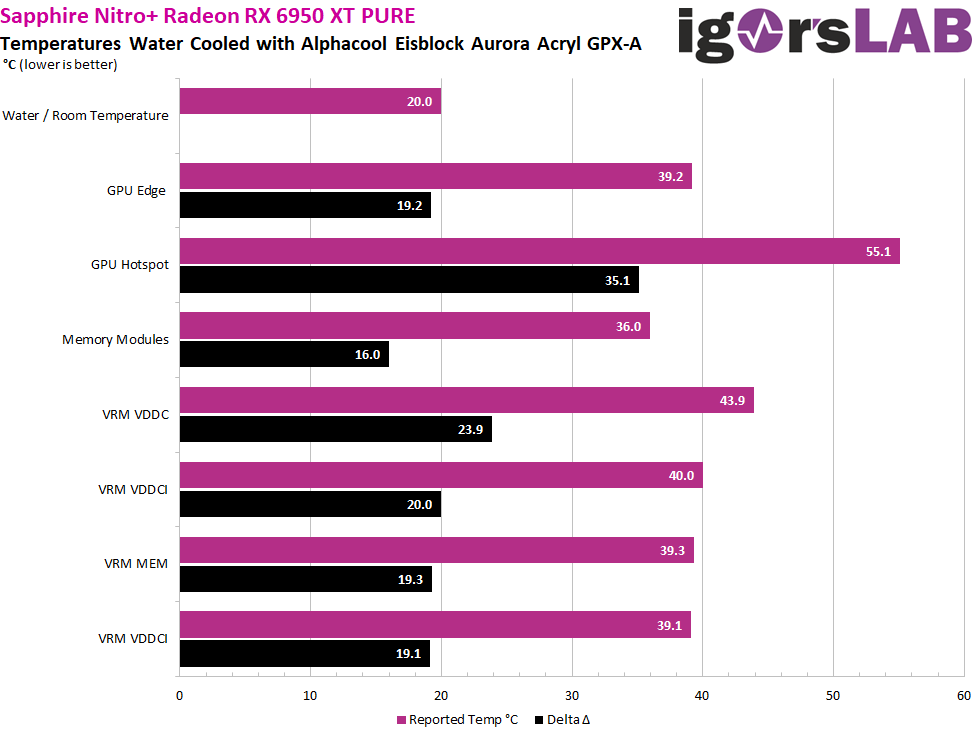
The values of the IR measurement are a bit higher, because we also see the influence of the voltage supply to the GPU, which heats the area from the voltage converters to the BGA a bit more.
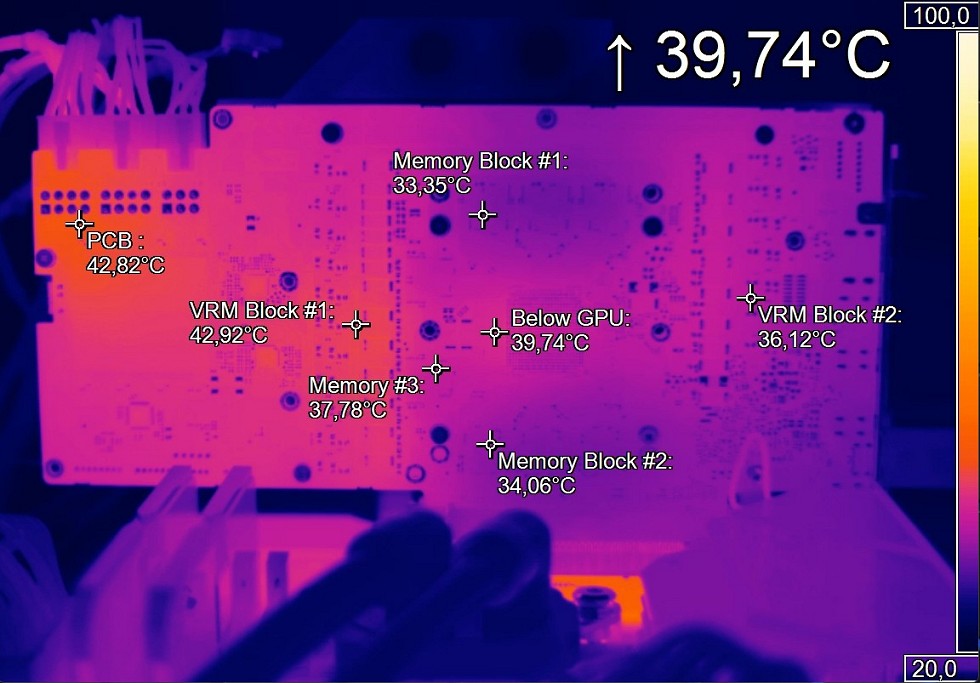
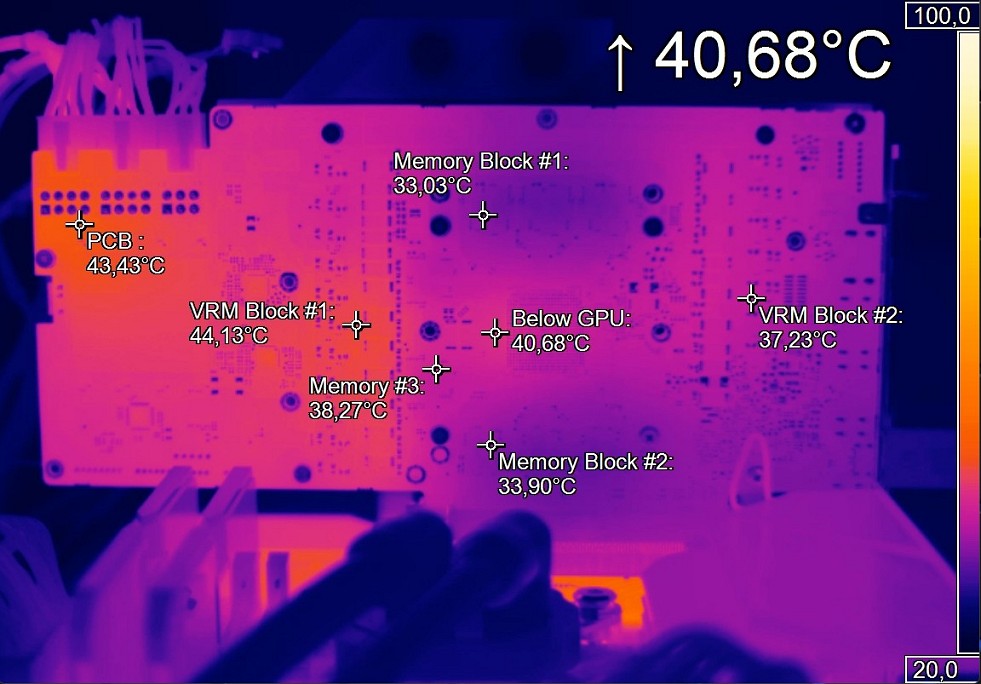
Nevertheless, almost everywhere only temperatures of below 40 °C or, in the case of a voltage transformer near the track for VDDC, of about 44 °C can be measured. This is absolutely usable and even exemplary in terms of surface area. The fact that the entire board is only 20 degrees above the water temperature allows three conclusions: AMD did everything right with the layout of the board, TSMC and the packagers produced an extremely flat package that hardly has any measurable tolerances (I have tested 15 cards that turned out absolutely identical) and the cooler is also good. Three findings, one result.















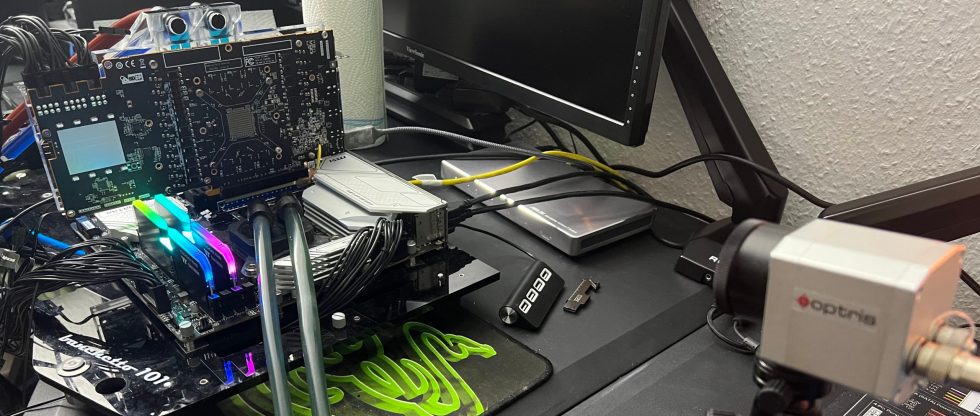

















51 Antworten
Kommentar
Lade neue Kommentare
Urgestein
Urgestein
Veteran
Veteran
1
Urgestein
Urgestein
Mitglied
Mitglied
1
Mitglied
Mitglied
Veteran
Veteran
Veteran
Veteran
Mitglied
1
Mitglied
Alle Kommentare lesen unter igor´sLAB Community →